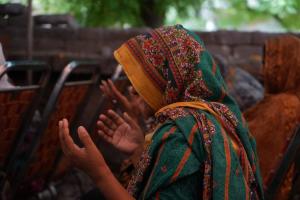Marriage offers significant benefits for men and women but eludes many, study finds

In Genesis 2:18, “The Lord God said, ‘It is not good for the man to be alone,’” and gave him Eve as a suitable helper. And God perhaps wedded Adam and Eve because of the benefits that a new study suggests married men experience over single men.
At a rate of 52% to 30%, married men are found to be far more likely than single men to report being very or completely satisfied with their social lives, according to the latest American National Family Life Survey.
The survey of 5,030 adults nationwide, designed and conducted by the American Enterprise Institute between Nov. 23 and Dec. 14, 2021, found that married men also have more close friends than single men.
Single men were three times as likely as married men to say they have no close friends.
Some 49% of married men reported being more satisfied with their personal health compared to 34% of single men. More than half of married men, 56%, further noted that they hardly ever or never feel lonely or isolated from the people around them. Only 25% of single men felt the same way.
While women enjoy the benefits of marriage, the survey showed the gains for married women were more "modest." Forty-eight percent of married women report being very or completely satisfied with their social life compared to 33% of single women. Married women were also more satisfied with their personal health than single women. They were also less likely to experience loneliness or social isolation.
Despite these perceived benefits, however, a confluence of factors in American culture and society has driven down the marriage rate.
Data released in 2020 showed the U.S. marriage rate reaching its lowest point in more than 100 years. Gallup research shows that since 2015, less than 50% of U.S. adults are married, a decline over the years from a consistent 64% between 1978 and 1983.
But the decline in marriage rates is not necessarily due to a declining desire among Americans to get married.
“Solid majorities of Americans now view sex between an unmarried man and woman, same-sex relations, and having a baby outside of marriage as being morally acceptable,” Gallup researchers noted.
“While the marriage rate is declining, the desire of those who have never been married to get married someday remains high, with more than eight in 10 singles hoping to marry. Thus, their evolving attitudes about marriage may reflect increasing acceptance for how others lead their lives rather than a profound shift in their own lifestyle preferences.”
Recent research also highlights how various economic factors might contribute to the shifting attitudes toward marriage, which is increasingly becoming a symbol of wealth.
In “Mismatches in the Marriage Market,” researchers Daniel T. Lichter of Cornell University, Joseph P. Price of Brigham Young University and Jeffrey M. Swigert of Southern Utah University found that many successful women have to choose between remaining unmarried or settling for men who earn less than $53,000 and lack a college degree.
However, the American National Family Life Survey showed that men, even when they get divorced, are more likely to remarry. This is “perhaps because men are more likely to experience involuntary divorce, or at least a marital dissolution that they were less involved in initiating.”
Among Americans who have been divorced, men are much more likely than women to be remarried (51% to 33%). When it comes to divorced women, however, some 73% of the divorcee cohort who are now single expressed no interest in marrying again.
For the people who get married and endure, University of Maryland sociology professor Philip Cohen, who authored The Coming Divorce Decline, suggested that marriage appears to be losing its original intent and is becoming more of an “achievement of status.”
“Marriage is become more selective, and more stable, even as attitudes toward divorce are becoming more permissive, and cohabitation has grown less stable,” Cohen said in an earlier report.
“The U.S. is progressing toward a system in which marriage is rarer, and more stable, than it was in the past, representing an increasingly central component of the structure of social inequality.”





























